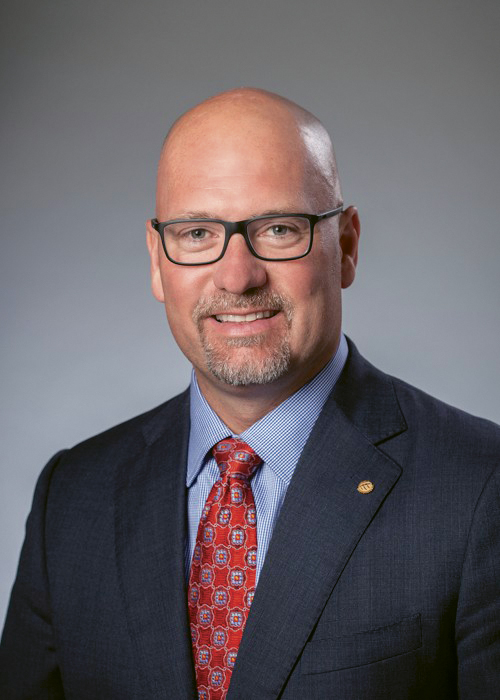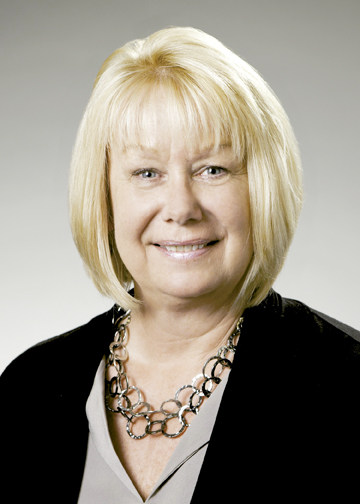Stop-loss insurer Sun Life provides a wide range of backup services
Healthcare costs continue their relentless climb. A recent report from PwC’s Health Research Institute forecasts 6.5% growth in overall U.S. medical costs in 2018, which it says would be the largest increase since 2015. The Center for Medicare and Medicaid Services projects that, by 2025, healthcare spending will reach 20% of GDP, but then who can really project all the imponderables that go into that kind of calculation?
Working with their insurance providers, employers do their best to provide affordable medical benefits for this year, maybe next year, as the cornerstone of an employee benefits program, but future healthcare costs are indeterminable. How can an employer, an insurance provider or anyone else know what new medical procedures, drugs or treatments will be discovered and what they will cost?
Employers have converted to high-deductible plans, and offered health savings accounts and wellness programs. Workers have done their part—absorbing higher deductibles and co-pays and purchasing voluntary coverage. These cost-control measures have put new tools into the hands of those in the workplace who are most affected by the rise in healthcare costs.
Perhaps the best example of employers utilizing a hands-on, creative approach to managing their healthcare costs is their adoption of self-insurance programs. Much of what is accomplished in a self-insured plan boils down to control over plan design. Self-insured employers craft their medical benefits—with the help of a broker, a TPA or other administrator, and a stop-loss carrier—based on their own claims data and benchmark data available for comparison.
About 15% of covered workers in small firms and 79% in large firms are enrolled in health plans that are either partially or completely self-funded, according to the 2017 Kaiser Family Foundation and Health Research & Educational Trust study. Overall, 60% of covered workers in the United States are in a plan that is at least partially self-funded, an increase from 49% in 2002.

—Michael Hoefler
Vice President, Distribution, Stop-Loss
Sun Life Financial
By moving from a fully-insured plan to a self-insured one, an employer can save on premiums, taxes, and fees, and has the potential to achieve a positive return if claims experience is favorable. To achieve these ends, a self-insured employer must also be a self-assured employer—assured of its own risk-bearing capabilities and the overall make-up of its employee population.
HM Insurance, which has been providing stop-loss insurance for more than 30 years, points out on its website that a good candidate for self-insurance should have stable claims experience, a steady population of employees, financial stability, and a willingness to manage claims and take on financial risk.
Sun Life Financial is ranked number one in stop-loss premium among independent carriers by MyHealthGuide. Among the tools it provides for employers considering self-funding, Sun Life provides a 20-page Self-Funded Playbook, which has educational guidelines for making decisions about funding, claims administration and stop-loss insurance.
For example, in the section on claims administration, the playbook objectively compares an ASO (administrative services only) plan provided by an insurance company to a TPA (third-party administrator) plan, discussing the respective features, operations, and advantages of each. Using a TPA, the playbook points out, enables an employer to choose separate vendors for different services—an “unbundled” approach.
“For example, an employer might select a particular pharmacy benefits manager (PBM) from a company specializing in pharmacy benefits management, rather than getting the service from a health insurance carrier,” the playbook states.
It suggests topics for employers to address with a prospective claim administrator, including cost containment and negotiated billing strategies.
Choosing an administrator isn’t always a one-time decision for self-insuring employers. Sun Life sees 35% of self-funded groups change claims administrators each year.
“Employers place a lot of importance on minimizing disruption to their employees, so the decision to change claims administrators is not taken lightly,” says Michael Hoefler, vice president of distribution, stop-loss for Sun Life Financial. “However, the employer will often choose to shop around on a regular basis to make sure they’re getting a fair price. If the employer is dissatisfied with the service, or they find a better benefits package at a lower cost, they will likely consider switching.
“It’s important to note that employers could switch their claims administrators without changing the network plan if their TPA is one with access to a national network,” Hoefler adds.
In the stop-loss portion of the playbook, Sun Life explains specific stop-loss—claims applying to one individual—and aggregate stop-loss coverages—those for the entire group—and shows how the size of the employer affects the choice selected. (The smaller an employer is, the greater the chance that their stop-loss coverage will include both aggregate and specific coverage. The larger the employer is, the greater chance it will use only specific coverage.)
Employers are encouraged to obtain benchmark claims data, which Sun Life provides by industry and demographic characteristics, to guide them in assessing their own risks. An employer using the firm’s benchmarking services can view data for its peer group’s choices of deductible levels, types of benefits (medical only or medical and pharmacy) and their claims history.
Sun Life also points out the importance of specialized services that a stop-loss provider can offer. As part of the cost containment services it provides to its self-funded employer groups, Sun Life has a team of nurse consultants who work with case managers in lowering costs and improving patient outcomes.
Laura Rollinson, assistant vice president, stop-loss claims, at Sun Life Financial, explains, “The nurses, using outlier claim indicators and collaborating with case managers and brokers, identify potential opportunities for cost savings, such as bill negotiations or alternate high-quality treatment options that may be available at a reduced cost.
“For example,” she continues, “we saw a patient who was receiving medication at a hospital-based infusion center at a cost of over $340,000 annually for the employer. Our claims team and stop-loss sales specialist engaged the broker and claims administrator, who worked with the patient to transition to home-based medication, saving the employer over $300,000 and offering more convenience to the employee.”

—Laura Rollinson
Assistant Vice President, Stop-Loss Claims
Sun Life Financial
Sun Life also offers a voluntary program called SunResources®, which connects its stop-loss customers and their TPAs to vendors that help them manage their claims costs, even if the specific deductible has not been reached. These vendor services include a cancer center-of-excellence facilities network, a congenital heart disease center-of-excellence facilities network, hospital bill audit, kidney dialysis, medical review, organ and tissue transplants, out-of-network claim negotiation, specialty pharmacy distribution and services, utilization review and case management, and ventricular assist devices.
Sun Life’s data on high-cost treatments provide evidence of the need for specialists to monitor costs of these treatments. Its annual catastrophic claims report issued in mid-2017 shows that the number of multi-million-dollar claimants increased by 68% (from 114 to 192) from 2013 to 2016. In 2016, multi-million-dollar cases made up 2.2% of claimants but accounted for 23% of total stop-loss reimbursements.
Cancer is the highest cost generator. Intravenous drug treatments accounted for 48% of total paid charges on the five highest dollar claimants. Of the 562 claimants exceeding $1 million between 2013 and 2016, 45 generated more than $1 million in high-cost IV medications.
“Our research has shown that it typically takes about a year for an employer to convert to a self-funded plan once they start talking to a broker,” says Hoefler. “During this time the broker is providing education, offering guidance on providing a stop-loss carrier, explaining the nuances of self-funding and presenting product options to support the transition. They are also helping the client choose a claims administrator.”
Self-insurance traditionally has been used mostly by large employers, but it is gaining adherents among smaller employers. Some observers have noted that passage of the Affordable Care Act was an incentive for more small employers to adopt self-insurance plans to avoid regulations and costs associated with the ACA.
Hoefler says, “Smaller employers are moving to self-funding for the same reasons larger employers seek it out, such as cost containment, transparency of information, and more control over healthcare spending.”
Becoming part of a group captive is one way for a smaller employer to move to self-insurance. At the beginning of 2018, Sun Life entered into a partnership with Pareto Captive Services in which it will provide stop-loss coverage for small and medium-sized employers that use a group captive for their self-insurance program.
Andrew Cavenagh, managing director of Pareto Captive, says, “Captives make self-funding more accessible for small and medium-sized employers, so it is important to offer a strong stop-loss option that will give those employers the risk protection they need once they’ve chosen to self-fund.”
Recent Sun Life research shows that 40% of fully-insured employers would consider switching to self-funding, and of those, 70% would consider using a captive solution when switching. “Many brokers view captives as a great potential solution while guiding employers into self-funded conversions,” says Hoefler.
He also notes that while “brokers view captives favorably, some brokers have used other solutions that provide protection similar to captives, such as strong stop-loss providers coupled with large-scale cost containment methods.”
The cost of healthcare continues to rise, along with the potential for better health outcomes. Employers that can successfully meet their employees’ healthcare needs through their benefit plans will rise to the top as preferred places of employment. Self-funding, for those employers that understand what is required to execute it effectively, provides a creative way to reach that objective.
For more information:
Sun Life Financial
www.sunlife.com
The author
Thomas A. McCoy, CLU, retired in 2013 as editor-in-chief of Rough Notes magazine.






